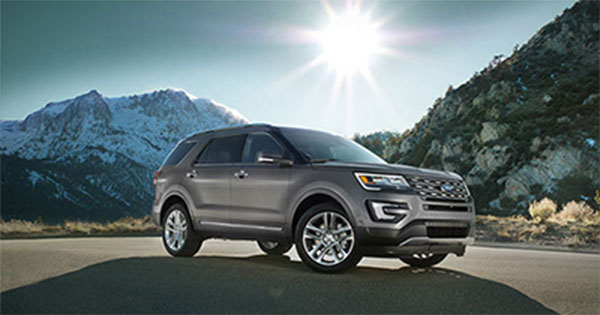For the Ford Explorer, 2016 is a big year — its 25th anniversary. Although not the first SUV of its kind to hit the market, the Ford Explorer did prove one of the most popular, selling more than 300,000 units per year throughout its first generation. Let’s take a look back at how one of Ford’s bestselling vehicles has evolved over the years.
1991-1994: Bold Beginnings
The first Ford Explorer debuted in 1991 as the Bronco II’s replacement. Like the Bronco II, its design sprang from the Ford Ranger pickup. What made the Explorer different — and much more appealing to families — was its four-door option. It came with a 4.0L Cologne OHC V6 engine and rear-wheel drive. However, four-wheel drive (4WD) was also available, and customers could also choose between a five-speed manual or four-speed automatic transmission.
1995-2001: Safety First
The Ford Explorer underwent its first significant overhaul in 1995. Improvements included the addition of airbags and rear headrests, as well as an exterior facelift. Control Trac 4WD became available in 1995, followed by a new 5.0L V8 engine in 1996. Ford continued to refine the engine and safety features throughout the next several years.
2002-2005: More Space
Even bigger changes came to the Explorer in 2002. Most importantly, it departed from its Ranger origins and expanded enough to allow for an optional third row (making seven seats total). An independent rear suspension improved its handling, and standard safety features included ABS with electronic brake distribution and a Securilock anti-theft system. Two engine options were offered: a 210-horsepower 4.0L V6 and a 240-horsepower 4.6L V8.
2006-2010: Green Updates
With the 2006 model year came eco-friendly improvements, along with better safety features. Tweaks to the V6 engine reduced emissions, while the new six-speed transmission paired with the V8 maximized fuel economy. Stability control and more airbags came standard on every model. Additionally, in 2008, the Ford Sync system debuted.
2011-2015: Sedan Meets SUV
The Explorer’s 2011 redesign was based on the unibody chassis of the Ford Taurus. It came with a 3.5L V6 engine and a six-speed automatic transmission, but a 2.0L EcoBoost I-4 engine was also available. Customers could choose from front-wheel drive or all-wheel drive. In 2013, the Explorer Sport returned with a 3.5L EcoBoost V6 engine and standard all-wheel drive.
2016: More Options Than Ever
The 3.5L V6 engine of the previous model year continues as the standard engine for the 2016 Explorer, but the available 2.3L EcoBoost engine now boasts 280 horsepower, 310 pound-foot of torque, and a towing capacity of 3,000 pounds. You’ll find many high-tech safety features to choose from, including blind-spot warning, lane-keep assist, 180-degree front and rear cameras, adaptive cruise control, an automatic parking system, and forward collision warning. With the XLT or higher, you can choose between a bench or bucket seats in the now-roomier second row. Little details like the more comfortable arm rests and rear cargo well add up to an all-around better vehicle.
A full 25 years after its debut, the Ford Explorer continues to perform exceptionally well. Its sales have increased every year since 2011



![[Facebook]](https://www.fordlincolncharlotte.com/blogs/594/wp-content/plugins/bookmarkify/facebook.png)
![[LinkedIn]](https://www.fordlincolncharlotte.com/blogs/594/wp-content/plugins/bookmarkify/linkedin.png)
![[Twitter]](https://www.fordlincolncharlotte.com/blogs/594/wp-content/plugins/bookmarkify/twitter.png)
![[Yahoo!]](https://www.fordlincolncharlotte.com/blogs/594/wp-content/plugins/bookmarkify/yahoo.png)
![[Email]](https://www.fordlincolncharlotte.com/blogs/594/wp-content/plugins/bookmarkify/email.png)

